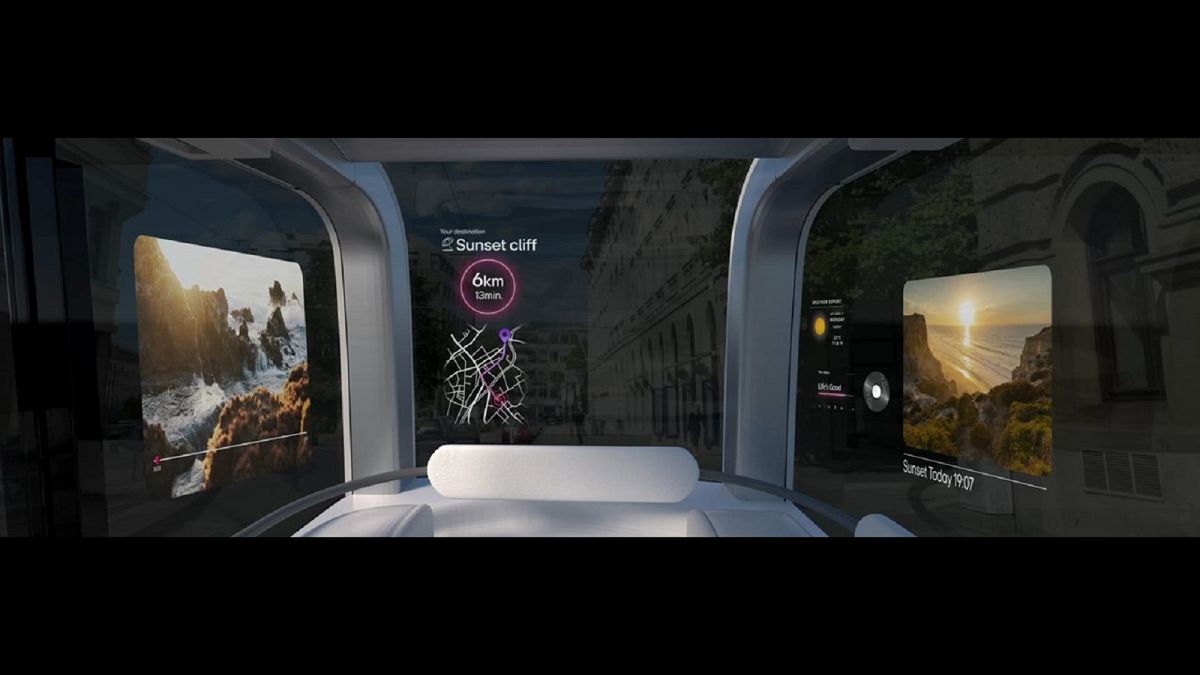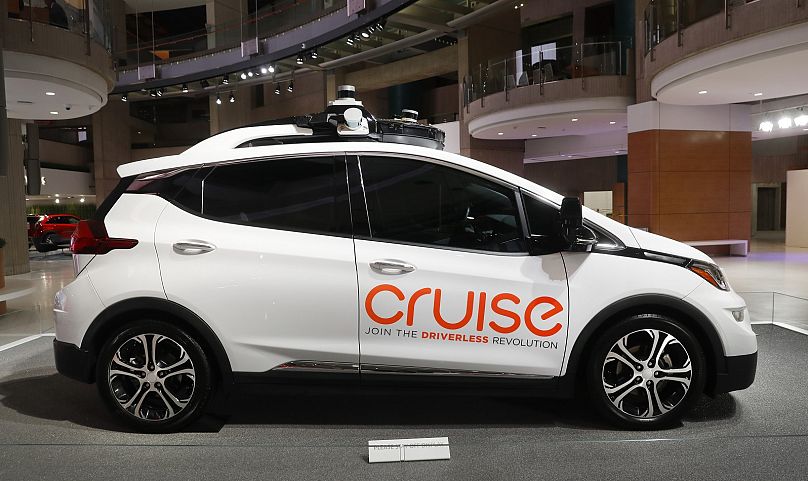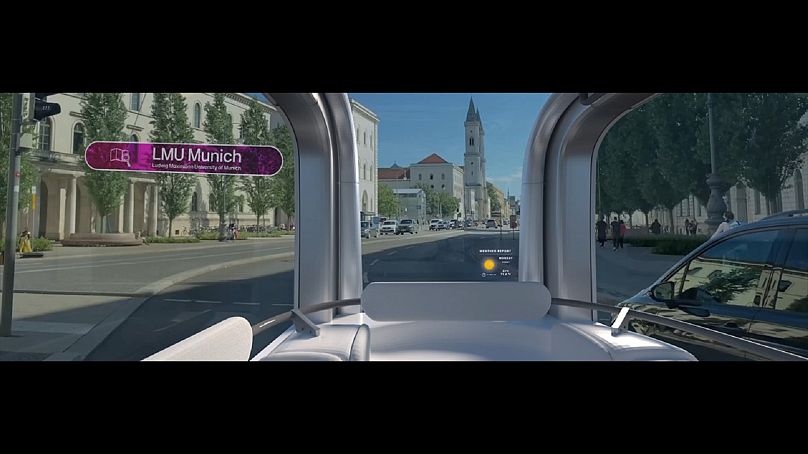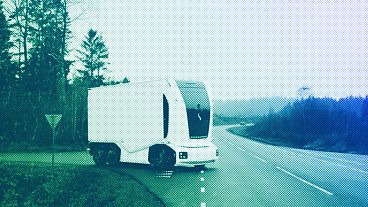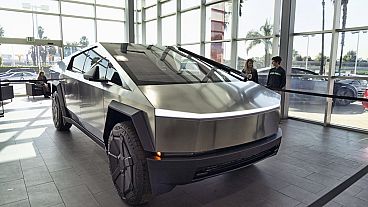LG presented a vision of what autonomous vehicles (AVs) could be like in the future - and it’s all about having more "me time" on the move.
It’s been a stressful day at work so you decide to linger in the car and take a breath before getting out and facing the task of preparing dinner or tackling the household chores.
You recline your seat, listening to the soothing sounds of nature while it gives you a heated massage. Or maybe you opt for counselling from the onboard artificial intelligence (AI) to wind down and clear your head after a hectic day.
Compared with your current daily commute sitting in stop-start traffic, the concept might seem lightyears from reality. However, it is just one vision of what autonomous driving could look like proposed by South Korean electronics giant LG.
The technology behind autonomous vehicles (AVs) is currently geared towards the mechanics of getting the car to move and navigate independently while the onboard experience of passengers is, for now at least, relegated to a secondary talking point.
LG, on the other hand, is now actively turning its focus to the sensory elements of being inside the autonomous cars of the future, believing the perspective should shift to the opportunities that AVs will give to improve the driving experience.
"There have been a lot of discussions about future mobility in terms of physical transformation and the role of the car. However, despite many discussions, it is still unclear how the changes will exactly happen," William Cho, the company’s CEO, said this week at IAA Mobility - one of the world’s largest trade fairs of its kind - in Munich.
"As we all know, the mobility industry is evolving dramatically, changing our traditional beliefs on cars. Our in-depth customer research directed us to see mobility through the lens of customer experience, focusing on expanding space in the car and quality of time spent on the road".
The company’s idea? To redefine the car from a means of travel to a "personalised digital cave" for its occupant.
Autonomous vehicles: A pipe dream?
To date, billions have been invested in developing the technology to produce robot vehicles controlled and piloted by AI-powered computer systems, but prototypes so far all require human inputs.
AVs in the US are subject to standards set by SAE International, formerly known as the Society of Automotive Engineers, with level 0 being no automation and level 5 being the highest rating, full vehicle autonomy in all conditions and locations.
Tesla’s driver assistance system Autopilot, for example, which offers partial automation, is classified at level 2. The US carmaker’s basic Autopilot, which is available in all models, offers lane centring and assisted steering while more advanced systems, like Enhanced Autopilot and Full Self-Driving Capacity, have functions to help park, stop and summon the vehicle.
Earlier this summer, Mercedes-Benz announced its Drive Pilot system had been given level 3 approval, attaining the highest SAE rating for a commercial vehicle to date.
Unlike level 2, cars classified as level 3 can handle most driving situations but again, a driver must intervene to make inputs to avoid potentially dangerous incidents.
Last month, Cruise, an arm of US automaker General Motors, was granted a licence in California - along with Alphabet-owned company Waymo - to expand its existing fleet of self-driving taxis in San Francisco and operate on a 24/7 basis.
Unlike commercial vehicles, these taxis are operating at level 4 - in other words, near-complete autonomy. They are programmed to drive in a preset area - known as geofencing” - in which they can negotiate their environment through a combination of cameras, sensors, machine learning algorithms and artificial intelligence (AI), determining their location, real-time information on pedestrians and traffic and how each is likely to behave.
If a difficult circumstance arises, a human operator is able to step in remotely to guide or stop the vehicle.
And difficulties do arise. Just 10 days after it was granted its latest licence, Cruise was asked to reduce its fleet following a series of accidents, including a collision with a fire engine.
According to data from the US National Highway Traffic Safety Administration (NHTSA), self-driving Tesla vehicles have also been involved in 736 crashes in the US since 2019, resulting in 17 known fatalities.
Despite the rollout of services like Cruise and Tesla's Autopilot, and the major investment in research, development and testing by the automotive industry, it’s unlikely a level 5 vehicle will be on the market anytime soon.
Cho believes, however, that electrification will only accelerate the shift to autonomous driving.
"Today's mobility is shifting towards software-defined vehicles [SDVs]. This means social mobility will transform into highly sophisticated electronic devices and can be seen as one of moving space to provide new experiences," he said.
'Personalised digital cave'
LG’s vision for these mobile experiences is theoretical for now but the company plans to design and produce technologies for future AVs based on three core themes collectively known as "Alpha-able": Transformable, Explorable and Relaxable.
For the first, LG predicts that cars will become “personalised digital caves,” spaces that will be able to easily adapt to suit different purposes and occasions. It could be a restaurant to dine in with your partner, a home office on wheels where you can make business deals in private or even recline and watch a film in a cinema on wheels.
For the second theme, LG is aiming to incorporate augmented reality (AR) and advanced AI to improve the interactions with the vehicle; whether this be voice assistants who recommend content based on the duration of the determined route to your destination or interactive windscreens made from OLED displays that show information about your location and journey.
And of course, the driving experience should be relaxing, through sensory stimuli such as films, massages, meditative music and so on through the car’s infotainment system.
While level 5 AVs are yet to materialise, LG says it is already at work on the necessary technology to achieve its three-pronged objectives, including opening a new factory in Hungary in a joint venture with Magna International to produce e-powertrains, the power source of EVs.
"We strongly believe future mobility should focus on the mission to deliver another level of customer experience. LG, with innovative mobility solutions, is more than committed to this important mission," Cho said.
